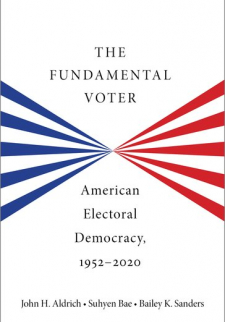Oxford University Press

Why is American politics so intense and emotionally competitive today, and how did we get here? In The Fundamental Voter, John H. Aldrich, Suhyen Bae, and Bailey K. Sanders explain why the notion that we are divided into tribal loyalties is, at best, only partially correct, and discuss how the divisions rest on much more substantive politics than they once did.
In the 1950s and 1960s, the American public based voting primarily on partisan loyalties. Landslide presidential elections were once common, but over the last forty years, they have converged to very closely contested elections. Congressional elections were increasingly incumbent centered before 1984 and decreasingly so afterward. These changes reflect the changing nature of fundamental forces that shape the public's electoral opinions and voting behavior. From a single such fundamental, partisan identification, the electorate now rests on five fundamental forces: party, ideology, issues, race, and economics.
Since the 1980s, these fundamentals have grown increasingly important and increasingly aligned, such that voters are now sorted into two increasingly bitterly divided sides. Believing that the other side is on the wrong side of nearly everything of political relevance, voters, like officials, have come to deeply dislike the opposition, a state of affairs that threatens to undermine the stability of democratic institutions in the United States.